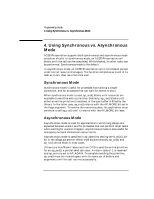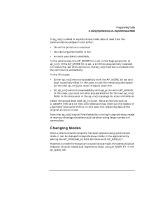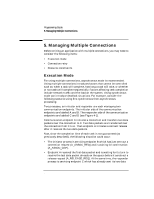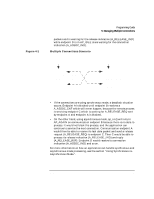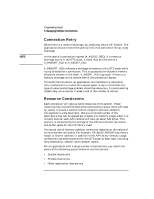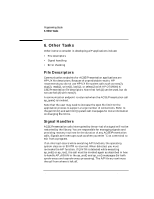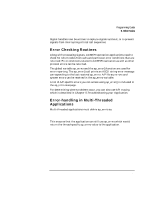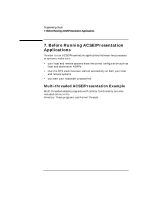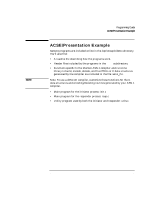HP 800 ACSE/Presentation and ROSE Interface Programmer's Guide - Page 61
System Maximums
 |
View all HP 800 manuals
Add to My Manuals
Save this manual to your list of manuals |
Page 61 highlights
Programming Guide 5. Managing Multiple Connections Note that if an ACSE/Presentation call (such as ap_open()) fails because of temporary memory shortage, the application may want to retry the same call later. System Maximums OTS supports up to 4096 virtual circuit (VC) connections at the transport and network layer (X.25 CONS). If applications such as X.400 or FTAM are also in use, note that each session access connection also uses a transport connection. If XTI API applications are also in use, note that each XTI connection also uses a transport connection. The number of X.25 VCs supported may be further limited by hardware configuration limits and the number and type of X.25 interface cards. The system has no priority for connection requests versus data transfers on existing connections. It is recommended that an application successfully bring up all required connections before transferring data. Connection management should not occur during data transfer. The application pacing should avoid possible timing problems. Process Maximums It is possible to have a single process use up to the maximum number of connections. Under these circumstances, observe the following restrictions: • A low rate of incoming data, including connect indications. • Incoming events do not occur at the same time on all of the connections. Too many concurrent events can overflow buffers. The AP_AGAIN error may occur more often. • The application should receive incoming events as soon as possible to regularly poll the connection for events. • Check burst rate. • Check pacing of execution watching for timing errors. • Check if the number of connections gradually increases or decreases. Because communication endpoints are file descriptors, the maximum number of communication endpoints (and connections) per process is limited by the maximum number of open files allowed per process by HPUX. The number of connections allowed per process is further limited by any other files opened by the process. Chapter 4 61



